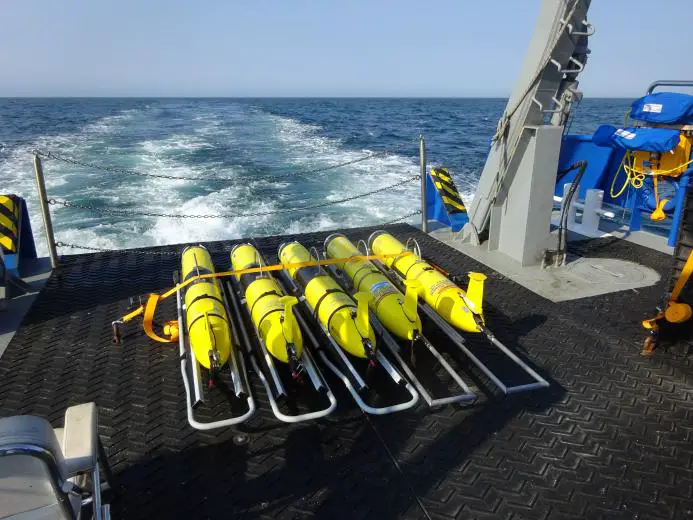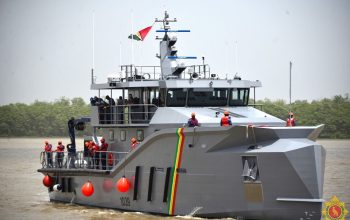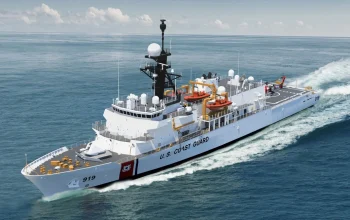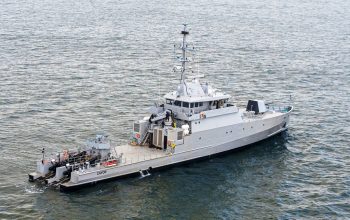Scientists from the U.S. Naval Research Laboratory (NRL) Ocean Sciences Division are optimizing the placement of ocean gliders and the usage of glider data to improve the Navy’s ability to predict ocean conditions. Researchers frequently use gliders – slow-moving, long-endurance underwater vehicles to collect data on ocean conditions such as temperature, depth, and salinity; in effect, observing the ocean’s weather. Because of the ocean’s vast volume, efficiently placing a relatively small number of gliders to capture observations of a dynamic environment can be tricky. Recently, NRL researchers have been looking at ways to optimize glider placement, including using them in teams.
The current paradigm in deploying ocean gliders calls for placing them far away from each other to maximize their limited spatial coverage. However, Book said a slowly moving, single glider by itself cannot tell the difference between a stationary, kilometers-long ocean feature and a traveling ocean feature that oscillates over several hours. On the other hand, a team of gliders working together can provide spatial context and potentially help resolve this issue.
Placing gliders in teams required a change in piloting techniques, adding complexity to the project. To enable piloting gliders together, researchers built on an existing automated piloting tool developed by NRL called Guidance for Heterogeneous Observation Systems or GHOST. GHOST had the ability to optimize single glider use with user-defined conditions. For example, users could specify ocean areas to avoid and GHOST would provide reasonable paths under these restrictions. Book and the research team adjusted GHOST to employ glider teams by adding two rules.
With GHOST upgraded, Book and the team took to the field to test the teaming concept. A first big decision was location, and the team decided to go to North Carolina. Book explained the additional dynamic of how some Gulf Stream water spins off the main stream onto the shelf where it can sink below coastal water. Even though Gulf Stream water is warmer, its salinity makes it denser than the fresher but colder shelf water. Ocean gliders provide vital measurements in these conditions because the colder waters above mask the warmer waters below. Finding and predicting such features can be important to many different types of naval operations.
For 18 days off the coast of North Carolina, NRL researchers tested six gliders in different team configurations near the Gulf Stream. Overall, the gliders collected more than 13,000 conductivity, temperature and depth profiles used in two ocean forecast models. Because of the volume of closely spaced glider data collected, Book’s team also created and tested new ways to use the data in ocean forecast models. Prior assumptions based on the idea of single gliders collecting data far apart from each other had to be relaxed or removed before the models could begin to use glider team data effectively.
This effort was completed through base program funding provided by the Office of Naval Research in collaboration with the National Science Foundation. The intense level of field effort was made possible by a team of 12 researchers and technicians from NRL’s Ocean Sciences Division, two reservists from the ONR Reserve Component program for support on meteorology and oceanography related projects, as well as collaborative help from a postdoctoral scientist, technicians, and students representing five separate academic institutions.


























